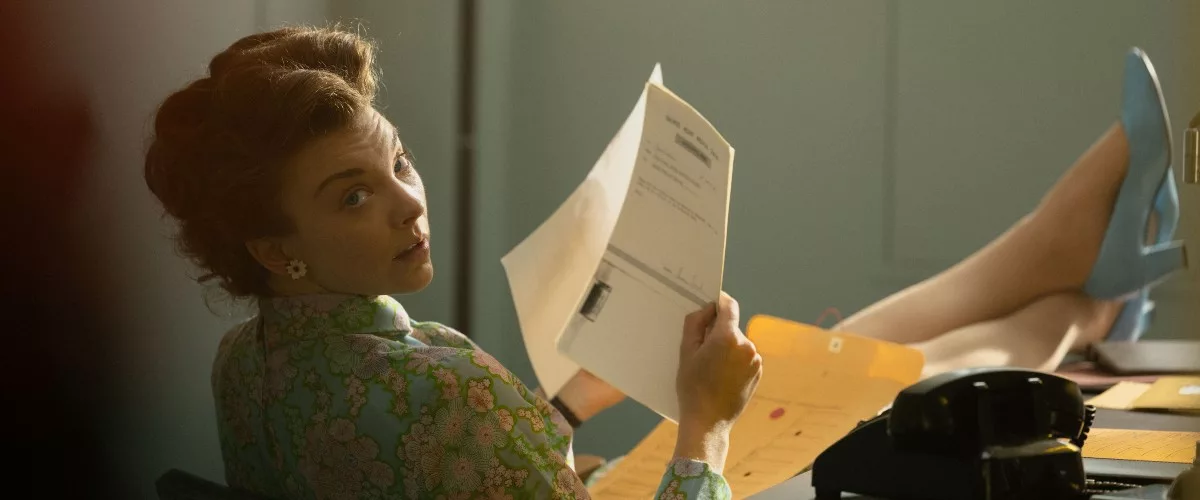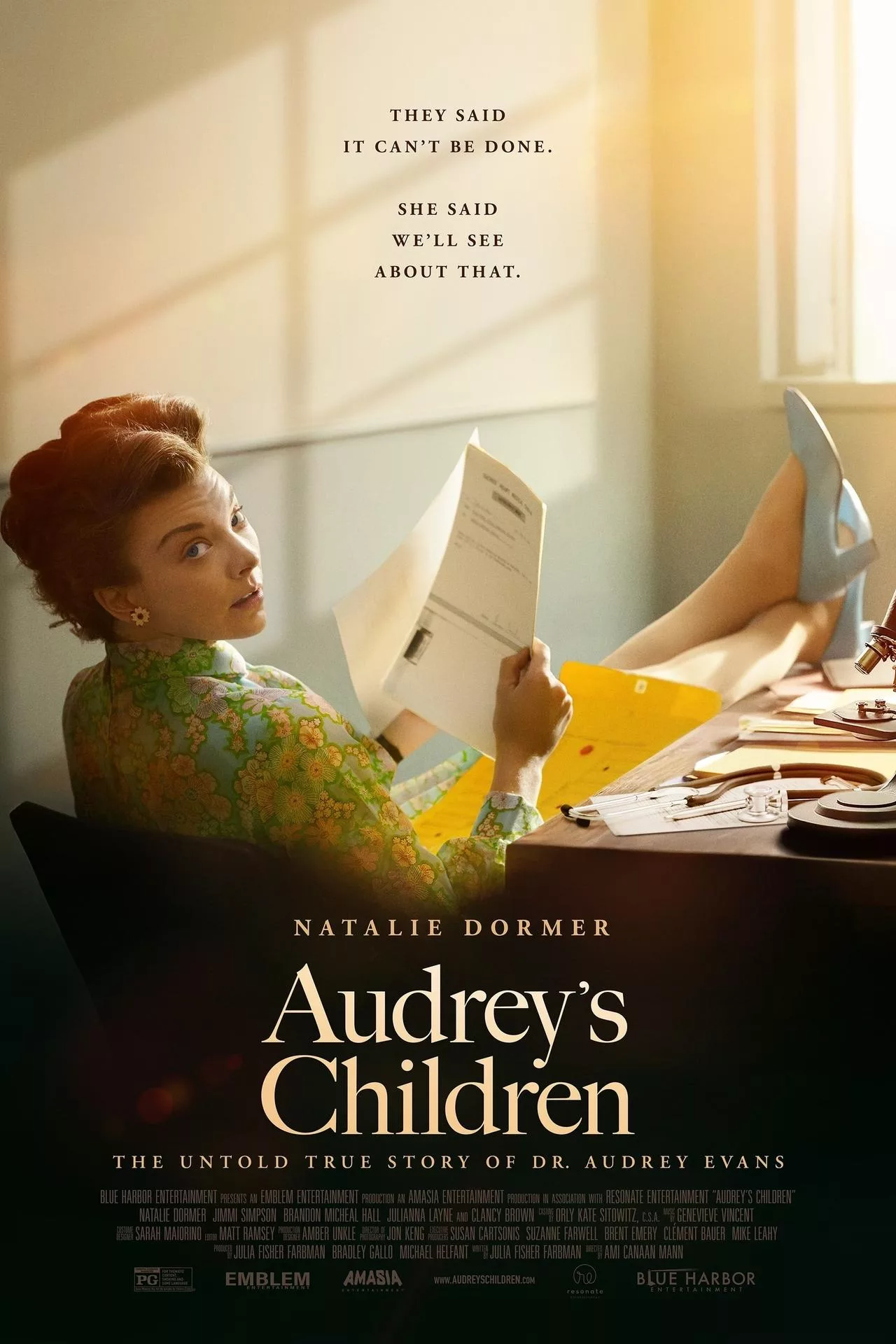No one has been able to escape being touched by that most terrifying of words: cancer. Every family has experienced the fear, pain, and loss that accompany what Dr. Siddhartha Mukherjee called “the emperor of all maladies.” It is such a devastating diagnosis that we sometimes forget how much progress has been made in just the last few decades. The 2013 film “Decoding Annie Parker” starred Helen Hunt as Mary-Claire King, the Canadian doctor who discovered the genetic link that vastly improved the ability to predict which women were most likely to develop breast cancer. And “Audrey’s Children” reminds us that as recently as the late 1960s, the survival rate for children with cancer was just 10 percent compared to almost 90 percent today. It is the story of Dr. Audrey Evans (Natalie Dormer), whose accomplishments in diagnosis, treatment, and support for young patients and their families could fill at least three movies.
“Audrey’s Children” manages to combine all three in a solid, often engaging and inspiring drama, anchored by Dormer’s committed performance. Every bit of her performance shows us that Dr. Evans was a rare combination of a tender heart, scientific brilliance, and fearless, boundless dedication to her patients at the Children’s Hospital of Philadelphia (CHOP). She was British, and had a brisk manner with adults that could sound governess-y. But for children she was endlessly patient, with a gift for gaining their trust and communicating the details of the disease and treatment that boosted their comfort and allayed their fears. Dormer also has a gift with child actors, clearly making them completely comfortable and following their lead in the most sensitive scenes, a nice parallel with the character she plays.
Dr. Evans arrived at CHOP with an impeccable record, which included a Fulbright fellowship and work with Sidney Farber, the founder of chemotherapy. She also arrived with a theory to advance his work by combining two different types of chemotherapy. New treatments take a long time to be approved. It takes time to get grant money and conduct the necessary experiments on animals. Dr. Evans did not want to wait. That means some shortcuts and broken promises. It means some dicey decisions that disregard the rights of patients and colleagues. And, at one point, it means impulsively jumping into a swimming pool with her clothes on to make a point to her boss, C. Everett Koop (yes, that Dr. Koop), played with dignity and compassion by Clancy Brown.
A standout in the cast is Jimmi Simpson, who rarely gets to play characters of depth and subtlety as he does here. As Dr. Dan D’Angio, a colleague and friend, he mostly helps Dr. Evans but sometimes has to tell her she has gone too far. An update over the closing credits tells us that their friendship went a little farther, but not until decades later.
Special credit, especially given the limited budget and a shooting schedule of just 23 days, goes to production designer Amber Unkle, who created settings that look believably drab and institutional to the characters (when she first arrives, Dr. Evans asks, “Has the waiting room always been so dreary?”) while interesting enough to hold our attention. Costume designer Sarah Maiorino ably locates the characters in the period while providing subtle signals about Audrey’s vibrant personality, especially a red dress that makes her stand out from the cooler tones all around her and flowered fabric that echoes her soothing explanation to her young patient about the source of the chemo drugs.
There were no Excel spreadsheets or AI to analyze the data in the ’60s. Drs. Evans, D’Angio, and Faust (a charismatic Brandon Micheal Hall) must sort through handwritten index cards taped to the wall to help them discern the patterns that are the first major innovation: Dr. Evans’ staging system for determining the optimal treatment for each individual. The second is the mixture that vastly improved the efficacy of the chemotherapy. The third demonstrated Dr. Evans’ deep humanity. She understood that it was not enough to treat a tumor; she had to treat the whole patient, and that included the family. She bought a house near the hospital to provide her patients’ parents with a free place to stay. It became the first of what, with the help of McDonald’s, would become more than 600 Ronald McDonald Houses around the world, providing not just beds and kitchens but a range of support services.
That is a lot to pack into one film, and we would benefit from more information to better understand her contributions and what made her so innovative. What does come across is Dr. Evans’ passion and compassion, her own unique mixture that did more than save the lives of millions of children. We see the possibility that with those qualities, even the most intractable problems can be solved.




















